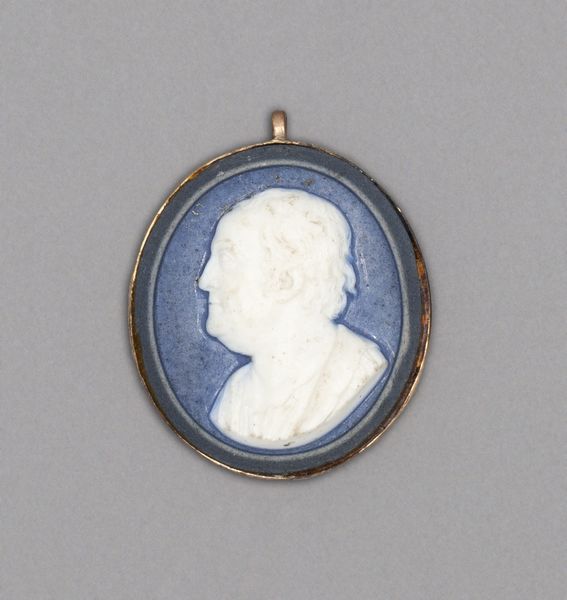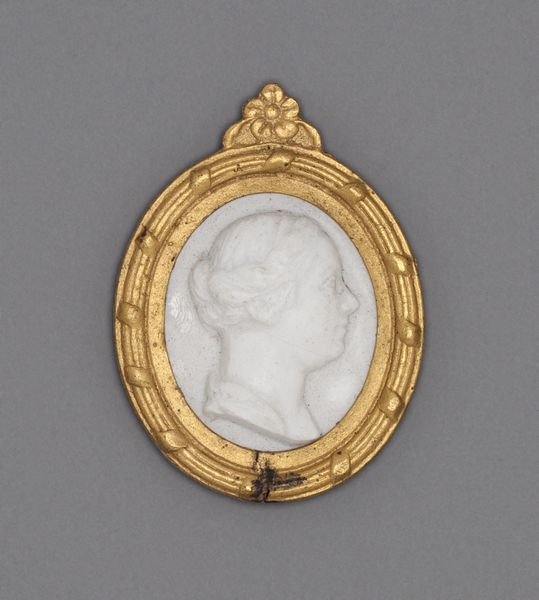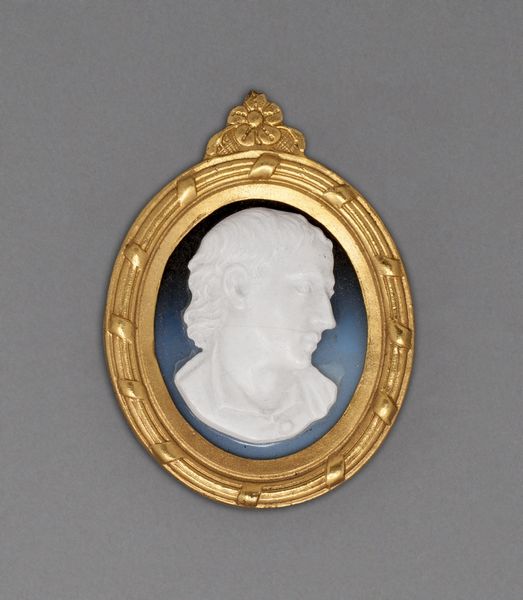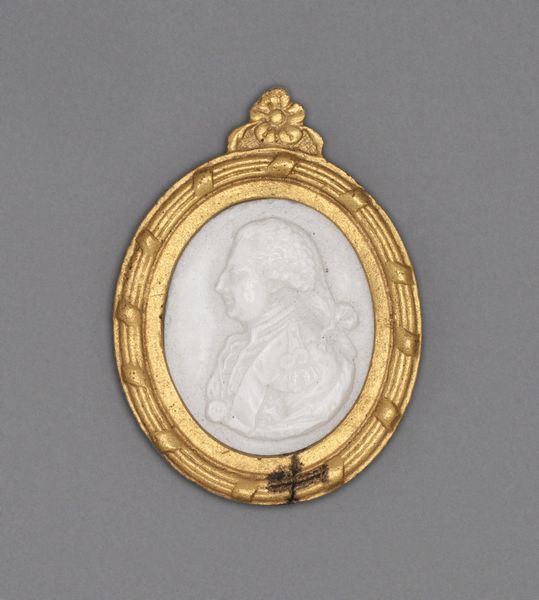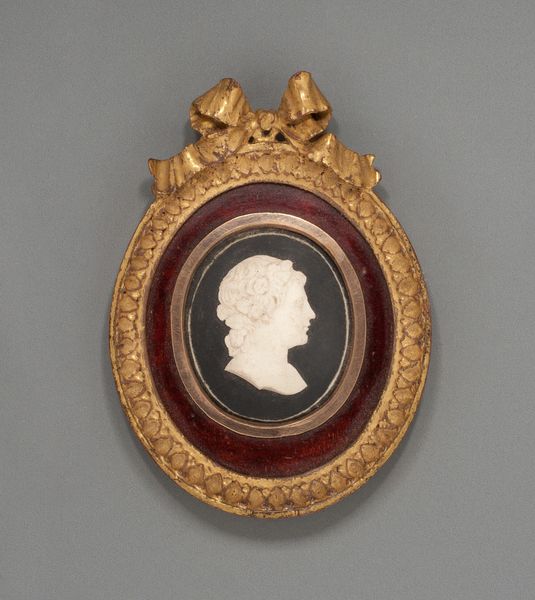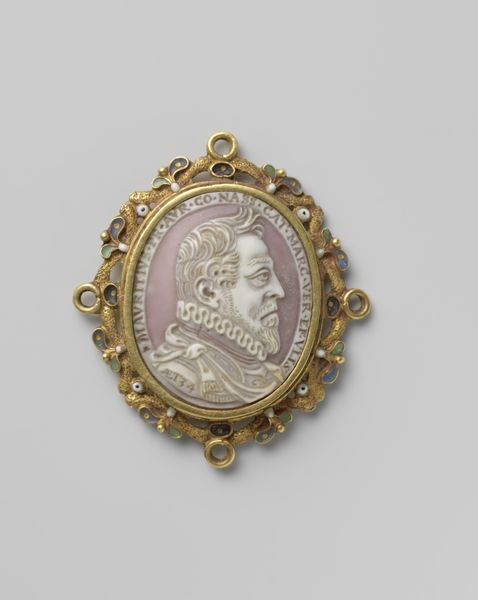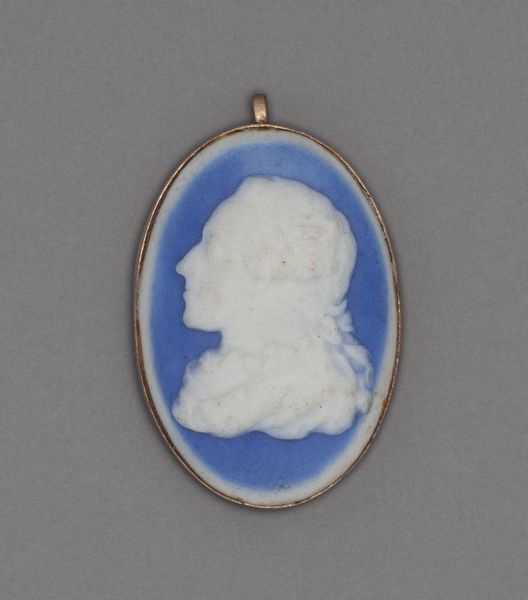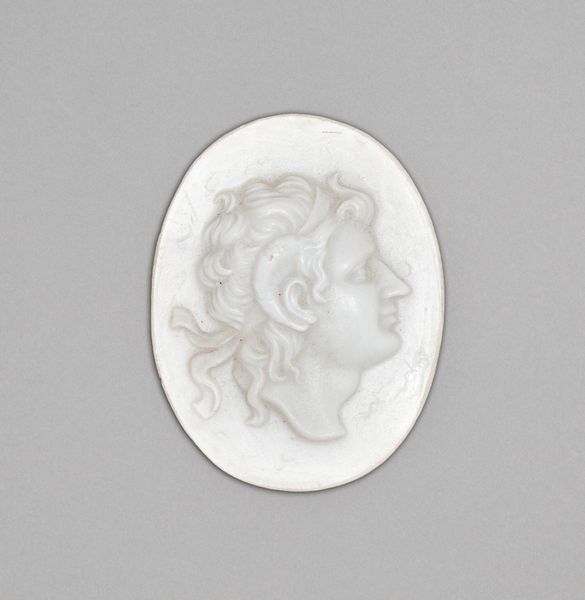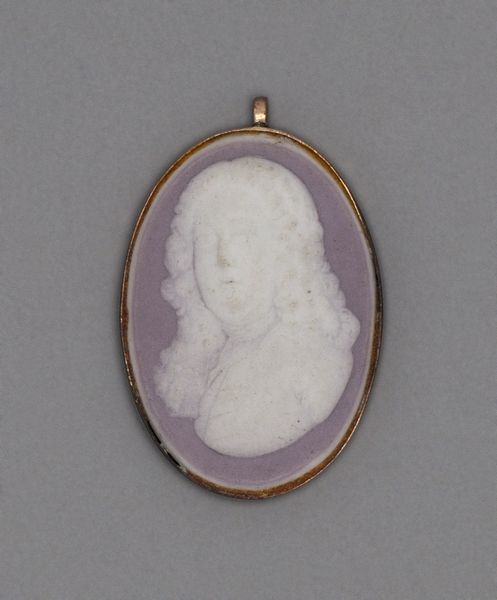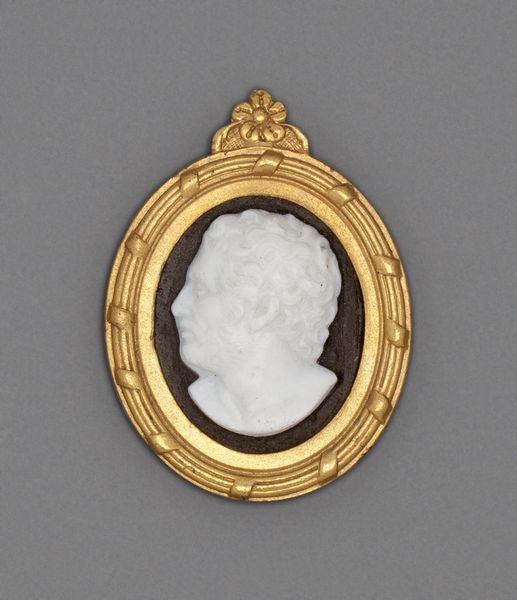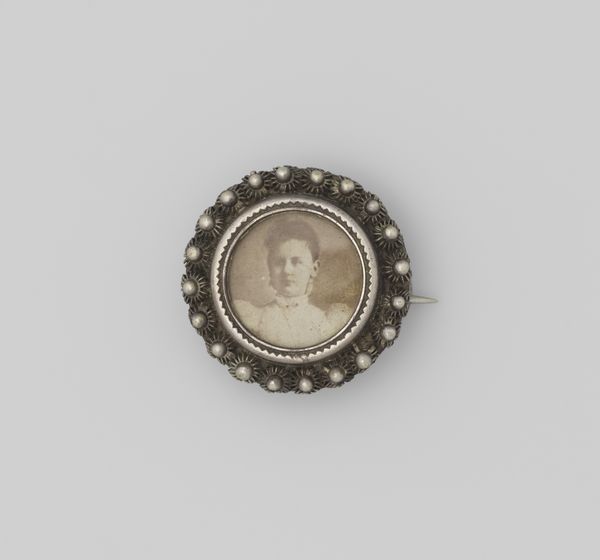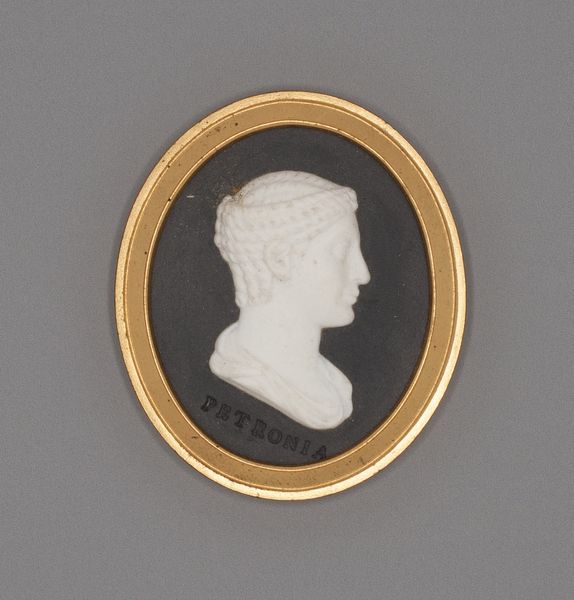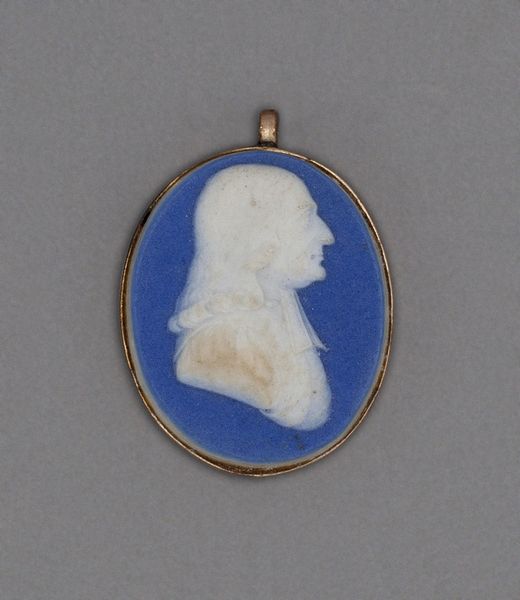
relief, ceramic, sculpture
#
portrait
#
neoclacissism
#
greek-and-roman-art
#
relief
#
ceramic
#
classical-realism
#
sculpture
#
history-painting
Dimensions: 7.1 × 6.2 × 1.27 cm (2 13/16 × 2 7/16 × 1/2 in.)
Copyright: Public Domain
Curator: Here we have a medallion depicting Aristippus, crafted around the late 18th century by the Wedgwood Manufactory. The crisp white relief against the pale blue ground is quite striking, isn't it? Editor: It's immediately delicate, almost jewel-like in its presentation. The meticulous detail of the tiny beaded frame surrounding the ceramic relief emphasizes the value placed on classical imagery during the Neoclassical period. Curator: Exactly! Aristippus, a philosopher who advocated for a life of pleasure, becomes a subject of contemplation within this piece. His philosophy, particularly the idea that pleasure is the highest good, was itself rather controversial. Editor: I find myself considering the technical aspects here. Wedgwood's jasperware, this unglazed stoneware, allowed for incredibly fine details, a feat of material and process that blurred the lines between industrial production and artistry. Mass production, essentially! Curator: The reproducibility certainly speaks to the democratizing impulses of the Enlightenment, where images and ideas were more widely disseminated. We need to consider who had access and consumed those images and how the philosopher becomes almost a symbol, accessible to a larger audience beyond scholarly elites. Editor: That production and consumption is precisely what captivates me here! The contrast between the sage and the mass-produced medium, which one critiques the other? And the act of memorializing a philosopher known for embracing pleasure through industrial means--fascinating! The ceramic medium would also last. Curator: Thinking about who this object might have appealed to is revealing. It was not merely an aesthetic statement but also a marker of erudition and affiliation with certain intellectual circles of the era, the networks of patronage so deeply embedded within the cultural landscape. Editor: And beyond the consumer, what were the conditions for the Wedgwood artisans? They turned philosopher and "sage" into something you can hold. Their expertise, too, must be remembered! Curator: Absolutely! We gain so much by acknowledging that art historical and social-material conditions shaped this object's creation and circulation and still shapes the narrative we continue to tell about this object today. Editor: Ultimately, seeing this makes me rethink classical portraiture in a new way. Instead of seeing a relic, the medium and social framework remind me of constant cultural remaking.
Comments
No comments
Be the first to comment and join the conversation on the ultimate creative platform.
